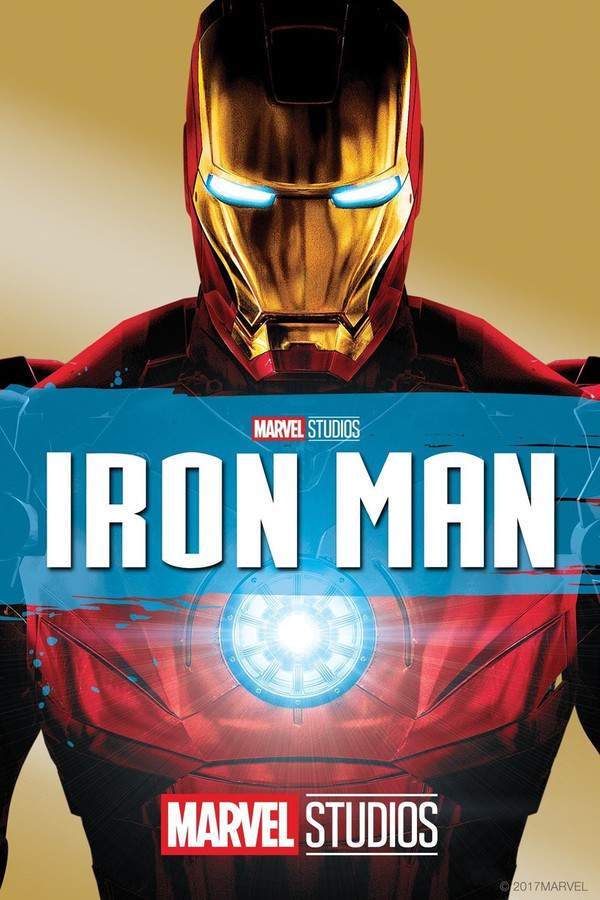What's After the Blog?
Film Industry
The Influence of End-Credit Scenes on Movie Marketing
Discover the world of end-credit scenes in cinema and their influence on movie marketing. Explore their history, role in building excitement, and glimpse their future. Join us on this cinematic journey.
September 24, 2023

Movies mentioned in this article
The Influence of End-Credit Scenes on Movie Marketing
Introduction
In the ever-evolving world of cinema, where storytelling knows no bounds, there exists a captivating and often overlooked element that has the power to shape audience perceptions and enhance movie marketing strategies – the end-credit scene. As the final credits roll, these brief, tantalizing glimpses into a film’s future or hidden Easter eggs have become a crucial tool for movie studios to leave a lasting impression on viewers. They are the cinematic surprises that keep audiences seated until the very end and generate excitement for what lies ahead.
End-credit scenes, often referred to as post-credit scenes or credits scenes, didn’t always hold the prominence they do today. Their journey from lurking in the shadows of closing credits to becoming integral to a movie’s marketing strategy is a testament to their impact on modern cinema. This blog post delves deep into the influence of end-credit scenes on movie marketing, examining their evolution, their role in creating buzz, and their contribution to extended cinematic universes.
The Evolution of End-Credit Scenes
Early Beginnings
To understand the significance of end-credit scenes, we must first take a trip back in time to the early days of cinema. In the early 20th century, when silent films dominated the silver screen, end credits primarily served the purpose of acknowledging the cast and crew involved in the production. There were no scenes interspersed among the credits; the focus was solely on giving credit where it was due.
It wasn’t until the latter half of the 20th century that filmmakers began to experiment with the concept of post-credit scenes. These early end-credit scenes were modest in scope and often used for comedic effect or as a playful nod to the audience. While they provided some entertainment value, their significance was relatively minor compared to what was to come.
Marvel’s Revolution
The turning point in the evolution of end-credit scenes came with the release of “Iron Man” in 2008, a film that would mark the beginning of the Marvel Cinematic Universe (MCU). Directed by Jon Favreau, “Iron Man” featured a groundbreaking post-credit sequence that left audiences both baffled and intrigued.
As the credits started rolling, viewers who patiently waited were rewarded with an unexpected scene featuring Tony Stark (played by Robert Downey Jr.) encountering Nick Fury (played by Samuel L. Jackson). This scene hinted at a larger universe of superheroes and villains, setting the stage for what would become a cinematic phenomenon.
Marvel had cracked the code of using end-credit scenes not just as a playful bonus but as a strategic tool for world-building and connecting multiple films within a franchise. The ripple effect of “Iron Man” and its end-credit scene was felt throughout the industry, sparking a revolution that would forever change the way movies were marketed and experienced.
Stay tuned as we explore how end-credit scenes have become a cornerstone of movie marketing in the following sections.
Creating Buzz and Anticipation
End-credit scenes have proven to be invaluable tools for movie marketing, primarily due to their ability to create buzz and anticipation. As a movie approaches its climax and conclusion, viewers are already emotionally invested in the story and characters. It’s precisely at this moment, when the end credits seem imminent, that these scenes provide an extra layer of excitement.
Filmmakers and studios have recognized the power of end-credit scenes to keep audiences engaged long after the main narrative concludes. By featuring intriguing snippets or teasers, they ensure that viewers leave the theater talking about what they’ve just witnessed. This buzz extends far beyond the confines of the cinema and into social media discussions, fan forums, and watercooler conversations.
The anticipation surrounding end-credit scenes often leads to increased repeat viewings, as fans return to the theater to catch details they might have missed the first time. In this way, end-credit scenes not only enhance the initial viewing experience but also contribute to a movie’s long-term success at the box office.
Extended Cinematic Universes
In the realm of blockbuster franchises, end-credit scenes play a crucial role in building extended cinematic universes. These scenes are not isolated; they are carefully crafted to interconnect with other films within the same franchise. Viewers are treated to hints, cameos, or plot threads that bridge one movie to the next, creating a sense of continuity and anticipation.
One of the most notable examples of this strategy is the Marvel Cinematic Universe (MCU). With each new MCU installment, fans eagerly await the post-credit scenes that tease the next superhero adventure or provide a glimpse of the overarching storyline. This interconnected storytelling has allowed Marvel to maintain a dedicated and engaged fan base while also enticing newcomers to join the journey.
The use of end-credit scenes to expand cinematic universes has since become a trend in the industry, with other franchises, such as the DC Extended Universe and Star Wars, adopting similar tactics. It’s clear that end-credit scenes have become a cornerstone of movie marketing by creating a sense of shared storytelling and fostering loyalty among fans.
Deleted and Alternate End-Credit Scenes: Hidden Gems
In the world of cinema, beyond the spotlight of the main feature and the gleaming credits that roll with it, a trove of cinematic treasures lies hidden—deleted and alternate end-credit scenes. These often-forgotten sequences, confined to the cutting room floor, hold within them the echoes of creative choices, storytelling possibilities, and glimpses of what might have been.
Deleted end-credit scenes, the abandoned offspring of a filmmaker’s vision, were originally conceived to grace a film’s conclusion but found themselves discarded during the editing process. These unreleased sequences can span the spectrum of emotions, from humor to drama, and their omission invariably stirs speculation among ardent fans who ponder the tantalizing question: “What if?”
Meanwhile, alternate end-credit scenes, the creative siblings of the final product, emerge during the production phase. Filmmakers sometimes craft multiple post-credit scenes, each presenting a distinct narrative path or character perspective. These alternatives offer a fascinating glimpse into the ever-evolving storytelling process, leaving fans to explore intricate “what if” scenarios and fueling lively discussions and theories.
The allure of deleted and alternate end-credit scenes extends far beyond the cinema’s dimmed lights. Fans with an insatiable appetite for the cinematic experience delve deep into the archives of DVD extras, online interviews, and behind-the-scenes content, all in the hopes of unearthing these hidden gems. In their quest to uncover the unseen, they breathe new life into a movie long after its initial release, adding an extra layer of excitement to the movie-watching journey.
As we embark on this cinematic journey, we’ll unearth the intriguing stories of some of the most iconic deleted and alternate end-credit scenes, each a testament to the creative forces that shape the magic of cinema.
The Future of End-Credit Scenes in Movie Marketing
Emerging Trends
While we cherish the cinematic history of end-credit scenes, we also look forward to the horizon, where these scenes will continue to play a pivotal role in captivating audiences. In an ever-evolving film industry, where innovation and surprises reign supreme, several emerging trends are poised to redefine how we experience end-credit scenes:
-
Interactive End-Credit Scenes: In an age of technological marvels, filmmakers are exploring the realm of interactive end-credit scenes. These scenes empower viewers to make choices or embark on immersive journeys that extend the movie’s narrative. As audiences become active participants, the boundaries between storytelling and engagement blur.
-
Personalized End-Credit Scenes: The rise of streaming platforms and AI-driven content recommendations has ushered in a new era of personalization. Imagine end-credit scenes tailored to individual viewers, based on their viewing history and preferences. This personalized approach aims to deepen viewer engagement and enhance the overall movie-watching experience.
-
Cross-Media Integration: End-credit scenes are no longer confined to the theater screen. They’re breaking free, extending their reach into mobile apps, video games, and augmented reality experiences. This cross-media integration promises to transport audiences beyond the confines of the cinema, immersing them in a rich tapestry of storytelling.
-
Fan Participation: Movie studios are increasingly recognizing the creative potential of their fan communities. As a result, they may involve fans in the creation of end-credit scenes, allowing them to influence or even vote on the content. This level of fan participation not only fosters a sense of ownership but also generates excitement and anticipation within the fan base.
Conclusion
In a cinematic landscape where every frame is a canvas for innovation and surprise, end-credit scenes have carved out a unique and impactful niche. From their modest beginnings as credits acknowledgments to their current role as strategic tools for movie marketing, these scenes have journeyed far.
Their ability to create buzz, anticipation, and a sense of interconnected storytelling cannot be understated. Deleted and alternate end-credit scenes add an extra layer of intrigue, inviting fans to explore the uncharted territories of their favorite films.
As we peer into the future, it’s evident that end-credit scenes will continue to evolve, adapting to new technologies and audience preferences. These scenes hold the power to create shared experiences, build loyal fan communities, and keep the enchantment of cinema alive.
So, the next time you find yourself in a darkened theater, patiently awaiting the roll of credits, remember that the real magic often lies in those hidden, lingering end-credit scenes. They are a promise of more adventures to come, a testament to the boundless creativity of cinema, and a reminder that the journey never truly ends.
As you leave this blog post, we invite you to share your thoughts and experiences with end-credit scenes. How have they enriched your movie-watching journey? Do you have favorite end-credit scenes that left an indelible mark? Join the conversation, and together, let’s celebrate the enduring magic of cinema.
Sources
- Collider: Like all memorable cinematic tropes, too much of a good thing cheapens its effect, as is the case with the post-credits scene.
- Adweek: Stay for the Credits: How Bonus Scenes Became a Crucial Part of Movie Marketing
- Vox: How Marvel turned its post-credits scenes into a pop culture phenomenon
- Filming at the Mouth: Why End-Credit Scenes Are Bad for Cinema
- National Film Institute: Film Credits
- Little White Lies: Is it time to do away with post-credits scenes?
- Rediscover the 80s: 1980s Movie Post Credit Scenes and Their Influence on Entertainment
- Quora: Why aren’t the people who are involved in marketing a film included in the credits of the film?
- Film Lifestyle: What is a Post-Credit Scene?
- AfterCredits: A Short History of the Post-Credits Scene
Continue reading

What's After the Movie?
Not sure whether to stay after the credits? Find out!
Explore Our Movie Platform
New Movie Releases (2026)
Famous Movie Actors
Top Film Production Studios
Movie Plot Summaries & Endings
Major Movie Awards & Winners
Best Concert Films & Music Documentaries
Movie Collections and Curated Lists
© 2026 What's After the Movie. All rights reserved.








